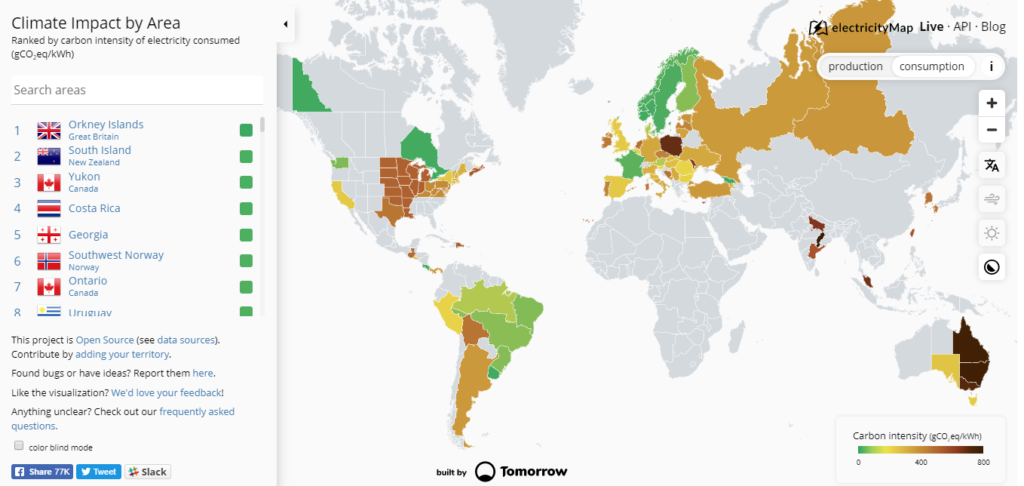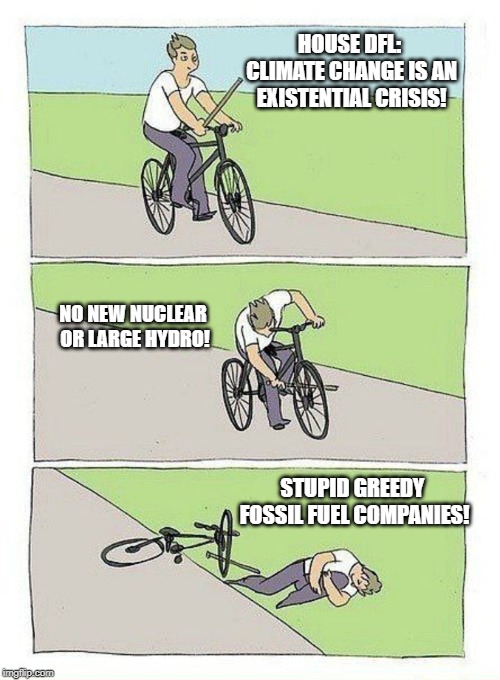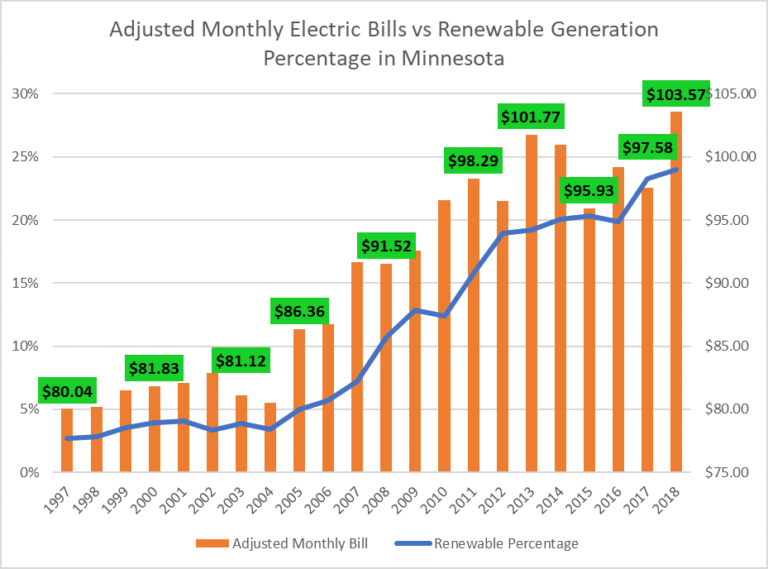Four Reasons Why Lori Sturdevant Is Wrong on Republicans, Renewable Energy
Lori Sturdevant wrote an editorial in the Star Tribune last weekend about how Republican lawmakers should embrace “clean energy” or face certain disaster at the polls in the 2020 elections.
Taking this advice, however, would be a “no-no” for four main reasons:
1) There was bi-partisan opposition to the proposed 100 percent carbon-free energy mandate by 2050, 2) It was liberal DFL House members, not Republicans, who opposed technologies that are actually capable of reducing emissions, 3) wind and solar increase electricity costs, no one will “save a buck,” and 4) Republicans who embrace expensive renewable energy policies get demolished in elections and liberal politicians around the globe have suffered defeat because of voter outrage over rising electricity prices.
1. Bi-partisan Opposition to 100 Percent Carbon-Free Mandates
Minnesota Republicans are often attacked and castigated as being against “the science” if they don’t support endless spending on wind and solar installations in the name of reducing carbon dioxide emissions, but absent from Sturdevant’s piece was the fact that the defeat of Governor Walz’s radical 100 percent carbon-free standard by 2050 was a bipartisan affair.
Multiple DFL senators from Northeastern Minnesota also opposed the proposed carbon-free energy mandates because they would cause electricity prices to skyrocket, and this would have a devastating impact on Minnesota’s mining industry because mines use an enormous amount of electricity. In fact, just one mining operation up north uses as much electricity and natural gas as the entire city of Minneapolis.
In addition to being more expensive than sources of electricity like coal, wind and solar are far less reliable. In fact, State Senator Tomassoni (DFL-Chisholm) stated that wind and solar are simply too unreliable to provide electricity to the mining industry:
“Go see the windmills on Taconite Ridge outside of Mountain Iron,” Tomassoni said. “When they don’t turn, they aren’t useful to our taconite plants. We need reliable and cost-effective energy to provide jobs on the Iron Range and steel for the U.S.”
Tomassoni added: “One-hundred percent renewable energy is not as easy or doable as the words sound themselves. We need to make sure that the new sources of energy are 100 reliable 24 hours a day 365 a year. And we can’t say that about solar and wind.”
Furthermore, let’s be perfectly clear, it was liberal Democrats in the Minnesota House of Representatives, not Minnesota Republicans, who were the biggest impediment to carbon-free electricity in the last legislative session.
2. Omission on Emissions-Free Electricity
Despite Sturdevant’s “blame the Republicans” thesis, it was the DFL House who explicitly said “no” to legalizing new nuclear power plants (the most scalable form of around-the-clock carbon-free power) in Minnesota. It was DFL House members who refused to allow electricity generated from large hydroelectric power plants to count toward the standard. If climate change is truly an “existential crisis,” these refusals are unforgivable.
The map below shows emissions from different countries and regions around the globe. Lower emissions have green colors, whereas brown and black show countries that emit more carbon dioxide. Looking at the map, you’ll note that the only countries or regions that are consistently “green” use nuclear and hydro, not wind or solar power.
In fact, Germany, the green darling, uses more coal as a percentage of their electricity generation than the United States.

Therefore, the House DFL’s plan for combating something they call an “existential crisis,” is an expensive and wholly unworkable reliance on wind, solar, and battery storage. The problem with this is that just 24-hours of battery storage would cost $133 billion, and we would need a lot more than 24 hours of storage if we were to rely on wind and solar.
In essence, the position of the DFL House and Governor Walz on climate change can be best summed up with the following meme.

3. No One Will “Save a Buck” Because Wind and Solar Drive Up Electricity Prices
We talk about this important topic almost every day, so I probably don’t need to belabor the point here, but the idea that wind and solar will save people money is just plain wrong.
The graph below shows electricity bills compared to renewable energy generation in Minnesota. Electric bills in Minnesota reached an all-time high as renewable energy generation also reached a new record.

This isn’t a case of correlation, either, it is causation. Xcel Energy has stated as much multiple times in filings before the Minnesota Public Utilities Commission. The company is raising electricity prices to pay for more renewable energy:
“The Company’s revenue deficiency in 2016 reflects the costs of significant investments in our system, both in 2015 and over the next several years, as we continue to invest in carbon free energy sources and replace critical infrastructure while preparing for the future. These investments are resulting cleaner air, a better environment and a more resilient, flexible and reliable energy system that can deliver value to our customers for decades to come, but they require sufficient revenues to support them.”
Because Xcel is a government-approve monopoly utility and not a truly private company, this “sufficient revenue” will come from the customers who are forced by the government to purchase their electricity from the monopoly.
Believe me, if wind and solar could stand without subsidies or mandates and provided a better service for a lower cost, I would be advocating for them instead of any other energy source, but this simply isn’t the case. The reason some businesses and homeowners put solar panels on their buildings is because it allows them to shift the cost of their electricity bill onto other ratepayers.
As a result, the people who are most likely to “save a buck” are wealthy people who can afford the panels
4. Disaster at the Ballot Box: Why Embracing Expensive Energy Won’t Win the Election
Not only are wind and solar unreliable and expensive, they will also fail to bring about their promise at the ballot box. A case in point is the electoral disaster that befell 13 GOP incumbents who were members of the House Climate Caucus in the 2018 Midterm elections, including Minnesota’s Erik Paulsen.
These politicians were not spared because voters liked their support for renewable energy and climate policy, they were booted from office. This makes intuitive sense, why would someone who is generally inclined to vote for a liberal Democrat vote for a moderate Republican? They wouldn’t.
Furthermore, based on American Experiment’s own polling, only 5 percent of people living in Greater Minnesota think that climate change should be a top priority for the state government to tackle, far below issues like healthcare, roads and infrastructure, taxes, a strong economy, farming issues, and access to high-paying jobs. These are the issues that voters appear to be most concerned about, not climate change.
It’s also important to note that Charles Hernick, the 2016 candidate for the U.S. House that Sturdevant described, was a loser in his election. Why take election advice from someone who has no experience winning them?
Climate Policy: Politically Poisonous Abroad
Not only do Republican politicians who take liberal stances on climate change tend to lose elections, but there has been a global backlash against politicians who enact policies that raise the cost of energy in the name of combating climate change.
In Australia, the liberal Labor party lost an election that was called “the climate change election,” an election almost everyone thought they would win. According to an article in the Sydney Morning Herald:
“Climate change simply doesn’t drive votes in the suburbs, where it apparently ranks as a third or fourth order issue like things such as taxes and property prices.
But then came mining. Communities that rely on resources smashed Labor. That is where Queensland came into its own, dishing out double-digit anti-Labor swings with relish in places like Capricornia (centred on Rockhampton) and Dawson (which includes Mackay and parts of Townsville). But all the talk of the Coalition’s domination of Queensland has missed that it only got 0.25 per cent of the swing. Overwhelmingly these votes flowed to One Nation and Clive Palmer, who then sent them the Coalition’s way by preferences.”
What’s more telling about this trend is this quote from the Sydney Morning Herald:
“What this patchwork of climate votes reveals is just how deeply, primarily economic this issue has become. The greatest predictor of your attitude to climate action is your economic exposure to it. Voting for climate change policies is now a luxury item.”
This is exactly correct.
In France, French President Emmanuel Macron proposed to increase the tax on diesel fuel to reduce carbon dioxide emissions. The historic unpopularity of this gas tax increase resulted in hundreds of thousands of French residents rioting in the streets.

In France, it was rural residents who rose up against the gas tax, not the wealthy urban population in Paris. Likewise, climate policies that increase energy costs may not bother people living in Minneapolis or St. Paul where incomes are much higher than those of Greater Minnesota, but these policies will disproportionately harm people living outside the Metro because they generally have farther to drive than residents of the Twin Cities and use more energy on a per capita basis.
Conclusion
The best way for any elected official to keep winning office is to be mindful of the needs of their constituents and enact policies that improve their standard of living. Republicans in Greater Minnesota would be wise to seek the opinions of their constituents, not opinion writers from the Star Tribune.